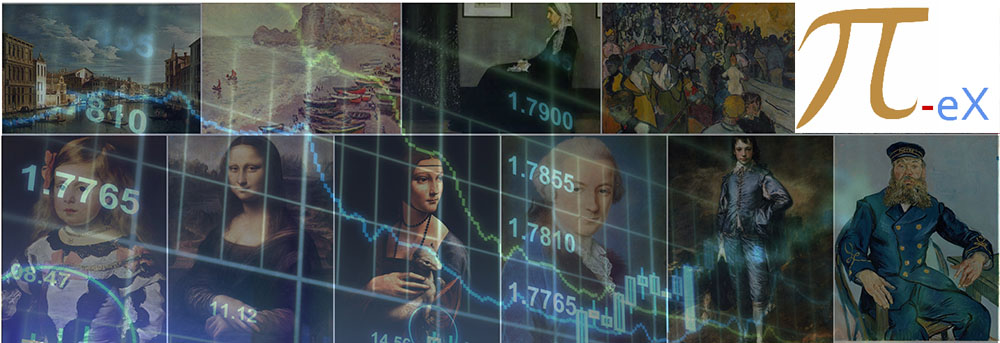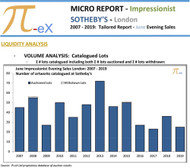Why did Sotheby's London Impressionist and Modern evening sale in June leave viewers with mixed feelings?
Posted by Christine Bourron on 20th Jun 2019
Sotheby's Impressionist and Modern evening sale in London on June 19th 2019 left viewers with mixed feelings. On the surface it looked like a successful sale, but for some sellers and buyers it did not feel like a great success. Pi-eX looks at the sale's analytics to understand what happened?
1. The total Hammer Price for the sale was better than the year before: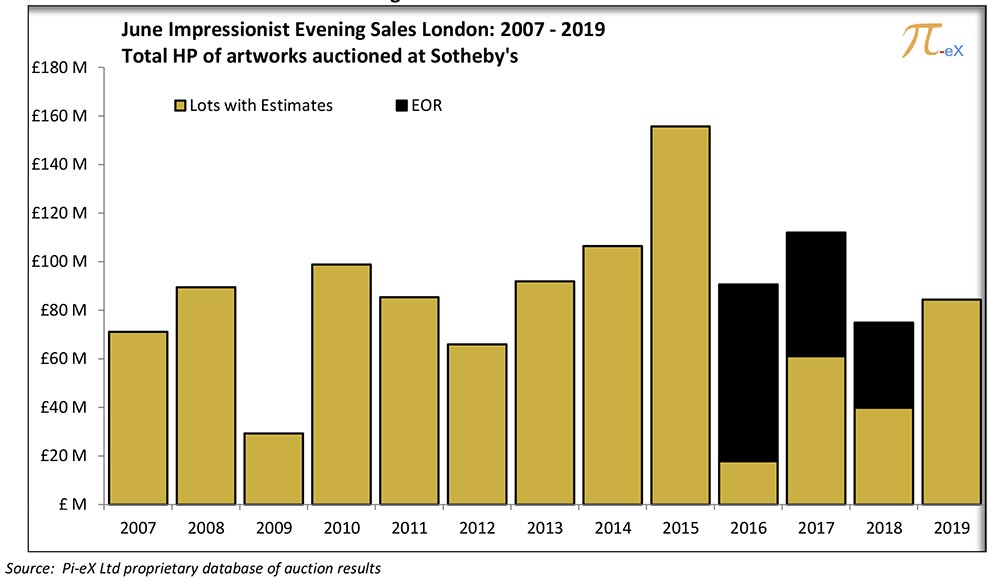
Sotheby's managed to bring the total Hammer Price for its June Impressionist and Modern evening at a very good level in comparison to previous years' results. This is all the more an achievement as there were no works catalogued with the mention Estimate on Request (EOR). As shown in the past three years, these lots tend to boost the total results.
2. Behind the total sale figure, few artworks were able to reach Hammer Prices (HP) above their original Low Estimates (LE)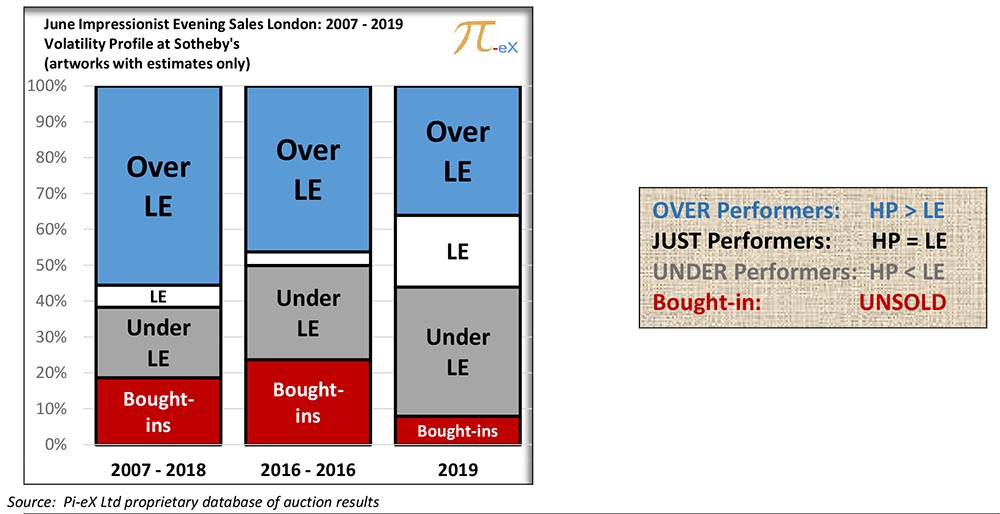
When people clap during an auction, it is usually because an artwork reaches a Hammer Price that is many times above its original Low Estimate. At the Sotheby's June Impressionist evening sale, there was very little clapping. Just once as the artwork "Jeune Homme Assis, Les mains croisees sur les genoux" by Amadeo Modigliani finally and painstakingly reached ... its Low Estimate of 16 million GBP.
Overall more than 60% of lots, the majority of the artworks auctioned, also painstakingly achieved a Hammer Price below or just at their Low Estimates.
3. Bought-ins (unsold artworks) were few and irrelevant to the final figure as Sotheby's had secured a large number of Irrevocable Bids
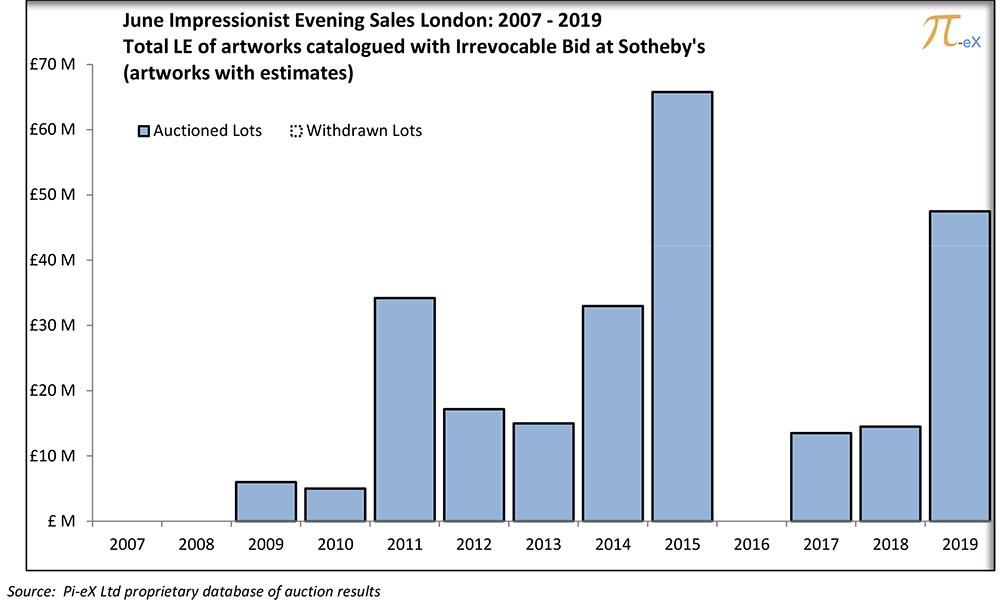
At a level unseen since 2015, almost 50 millions pounds of the total Low Estimate was covered by 7 Irrevocable Bids ahead of the sale. This means that before the auction, Sotheby's had pre-sold 7 artworks to Third Party Guarantors, who agreed to buy the artworks for about at least 50 million pounds or receive a financial reward if someone else decided to bid above their agreed bids. It is difficult to know exactly for how much each guarantor agreed to the irrevocable bid as each deal is customized and private, but it is reasonable to assume that it was around the Low Estimate (LE).
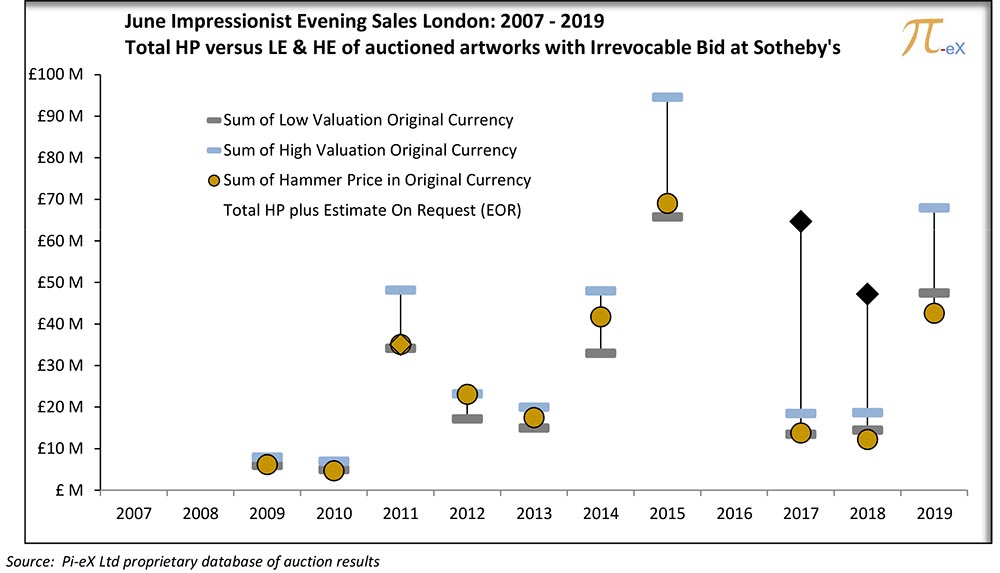
While this was a great insurance for Sotheby's, it may not have been such a great move for the Third Party Guarantors who in the end saw most of the lots with Irrevocable Bids obtained Hammer Prices below or just at the initial Low Estimate. This was the case of "Printemps a Giverni. Effet du Matin" by Claude Monet, which obtained a last minute irrevocable bid. It sold with a Hammer Price of 2.6 million, way below its Low Estimate of 4 millions pounds.
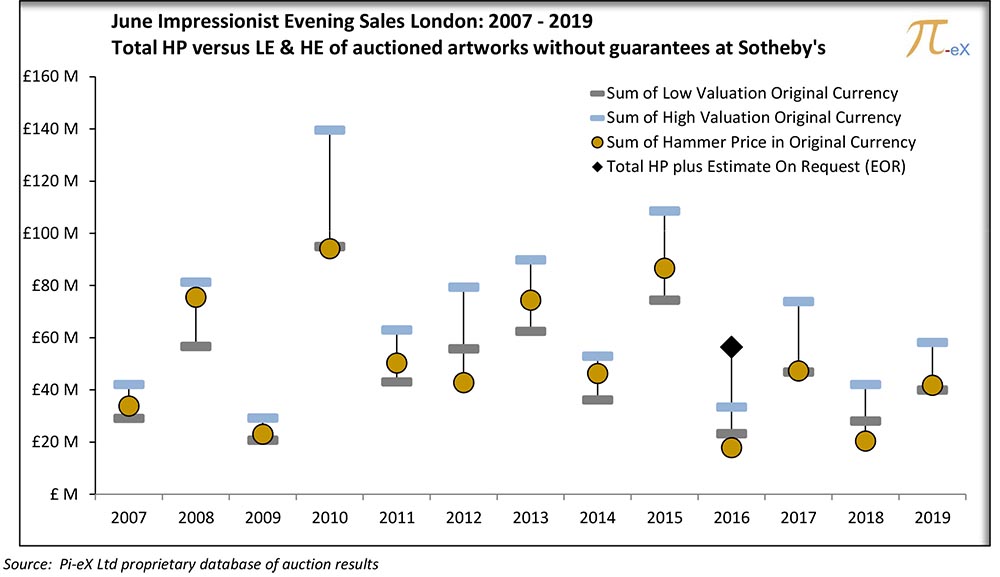
Interestingly lots without guarantees performed better this year than lots with irrevocable bids. "Epidemie (Epidemic)" by Alfred Kubin for example started with a Low Estimate of 150,000 pounds and raced to a Hammer Price of 790,000 pounds.
All together though, the rarity of clapping at the Sotheby's June Impressionist evening sale symbolizes well the mood in the room at the end of the auction.
For further insights on the June London Sotheby's Impressionist & Modern evening sale consult Pi-eX's Sotheby's Tailored Report or ask Pi-eX research for further analysis.
